There’s a special kind of magic in Sunderfolk that hits the moment you name your first ogre. Whether you’re pushing skeletons into pits or trying to romance a hyena with trust issues, the campaign wraps you in a world that feels as alive and playful as your party allows. After logging dozens of hours across solo runs, couch co-op, and full Discord parties, I knew I wanted to dive deeper into how Sunderfolk makes story and strategy feel so personal.
I sat down with Campaign Designer Kara Centell-Dunk to talk about emotional tone, replayability, what it means to design “elegant” encounters, and why your best move might be just shoving someone off a bridge.
This interview has been edited for length and clarity.
BUT WHY THO: I’ve been playing Sunderfolk with many people—some who love story, some who skip every cutscene—and even the non-RPG folks wanted to romance NPCs. How did you strike that emotional tone and make relationship-building land for so many types of players?
KARA CENTELL-DUNK: That honestly is all credit where credit’s due to the writer who worked with us, Justice Gets, and our hero designer, Xavier Gordon, who also did a lot of NPC design. What I think is funny about romanceable NPCs is for years in tabletop I was like, “We should put dating in our games.”
And then at my first game jam at Secret Door, Xavier and I were like, “We should put dating in our game.” And that was our pitch. Everyone was like, “Yeah, we should have affinity. We should do romances. We should do all that cute stuff.” So I’m less connected to the final result, but definitely had a hand in planting the seeds.
BUT WHY THO: There are over 20 characters to meet, and layering in who meets who—depending on party composition—could get overwhelming. How did you keep that all feeling approachable?
KARA CENTELL-DUNK: Playtest feedback really helped us balance that. Some of the early feedback from our closed beta was, “Hey, there’s too many town conversations. Too many NPCs.” So we had to refine that system to feel better, especially for groups of four players or one player running multiple heroes. It was a lot of trial and error and iterative design, like most systems.
BUT WHY THO: Each of my play sessions has felt different, like a new one-shot. When designing the Sunderfolk campaign, were you thinking more like an RPG or more like a board game?
KARA CENTELL-DUNK: Honestly, I think what we do successfully is center both at different times. When designing encounters, I value creating unique central conceits to make each one feel distinct. Sometimes the design starts with a cool mechanic or terrain gimmick. But for our main story missions, it starts with the narrative we want to tell, and then we figure out how to express that mechanically. We’re always trying to meet in the middle, where story and tabletop tactics intersect.
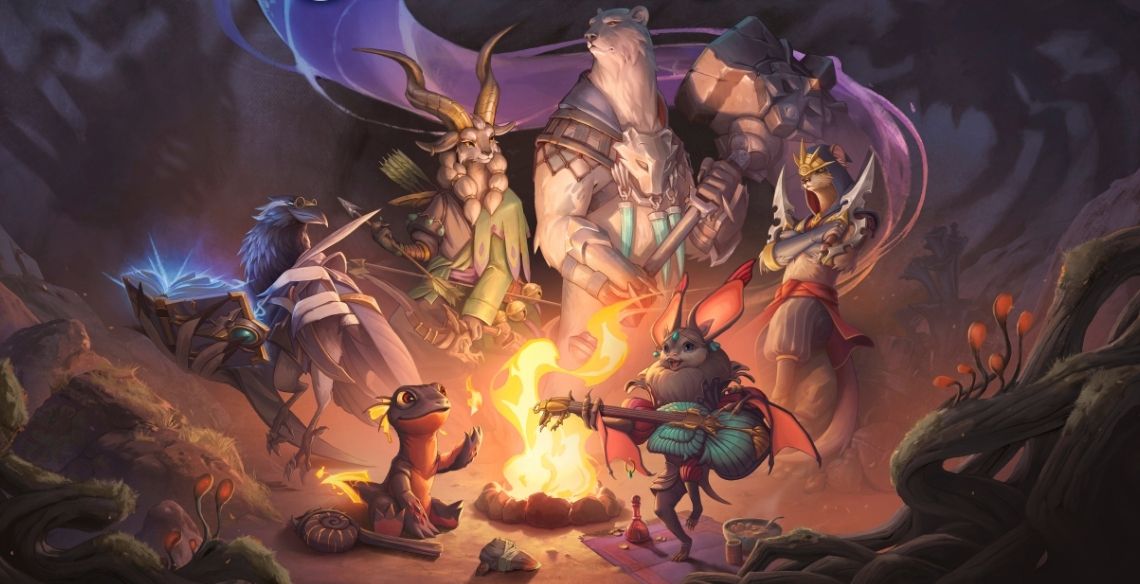
BUT WHY THO: Where did you draw the line between authored storytelling and full-on player freedom?
KARA CENTELL-DUNK: What we found over time was that the more we could give to players, the more it would feel like an RPG, and the better it would feel, and that there were lots of places where embracing that player input could allow for stronger guidance.
Naming things, for example: When I pitched elite monsters, I also pitched giving players the ability to rename them. We don’t rename stuff we need for a voiced story, but you’ll see text or encounter elements that are perfect for that. You get that board game feeling of, “Yeah, spawn some more skellies,” or “Get those gobos out here.”
BUT WHY THO: The tone feels hopeful, but never cheesy. Was there a narrative north star guiding that?
KARA CENTELL-DUNK: We definitely wanted to lean into themes of community and optimism, but especially in contrast to bad things happening. That’s when those themes matter most. So we aimed to build a world where hope feels earned, not handed out.
BUT WHY THO: There’s a lot of cultural flavor in the town events and side quests. Did you work with any consultants or readers to guide that inclusivity in the Sunderfolk campaign?
KARA CENTELL-DUNK: That’s a better question for Aaron, our narrative lead. But I do know our writer, Justice, raised important questions, especially when we were introducing the ogres. He championed making sure they felt like “people,” even though they’re your enemies at first.
This is an animal folk, mushroom folk, ogre folk game—but they’re still folk.
BUT WHY THO: Across five or six runs now, everything still feels new. How do you design replayable story content without making choices feel hollow?
KARA CENTELL-DUNK: I think it comes back to a foundational thing we do across the game: for the most part, we try to keep abilities approachable and simple. But a lot of our complexity comes from how those pieces combine. That’s true both tactically and narratively.
You’re often making individual choices that feel very straightforward… but the combination of those choices adds up and makes even similar setups feel really different. And then there’s the layer of how players bring themselves into the game—how they view their character, how they approach a conversation or a fight—it all shifts the experience.
Even just from different party dynamics, it changes. Like you mentioned, the way you play solo on Shadowstone versus playing with your friend who’s big into Warcraft—that’s going to shape the tone of the session. I’ve definitely had more silly playthroughs with friends who are playing silly and casual, and then more intense, tactical sessions with my hardcore gamer friends, where it’s not just about beating a mission, it’s about beating it elegantly. Like, “We’re going to dunk these enemies into the ground on hard.”
BUT WHY THO: Are there any story threads or clues you’d recommend players follow to uncover the deeper lore in the Sunderfolk campaign?
KARA CENTELL-DUNK: I think when you talk to characters from different factions, you start to get a much deeper peek into the world and the story itself.
For the ogre faction, those NPCs are Mudmouth and Wormsbait. For the fungi faction, its characters, like Buttonshroom, the Sentinel, and the Prophet… each of them gives you a slightly different view of the broader world. I think even talking to Sinclair offers a bit of that, too.
It’s less Arden-focused. Most of the Arden NPCs give you insight into life within Arden, but when you talk to folks from outside, you’ll get a wider lens. Like, what’s going on with the ogres after you’ve made peace? How are they handling the rampager situation? How has Shadowstone changed the way they live? Those are the kinds of threads that reveal more if you’re paying attention.
“You’re often making individual choices [in Sunderfolk] that feel very straightforward… but the combination of those choices adds up and makes even similar setups feel really different.” – Kara Centell-Dunk
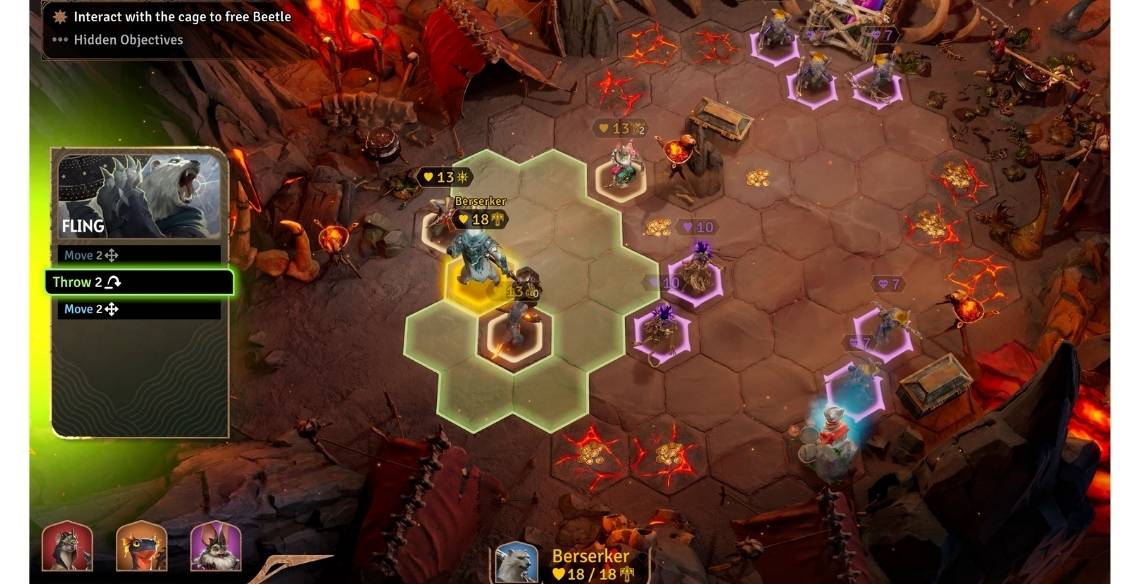
BUT WHY THO: What’s an encounter in the Sunderfolk campaign you’re personally most proud of?
KARA CENTELL-DUNK: So I have a favorite encounter. It’s funny because for a long time, I had a favorite encounter I made because it was my favorite to play and my favorite to watch people play, because I thought it was fun and interactive. And then, as I’ve been watching the game reach a broader audience, my favorite encounter has actually changed.
The thing I’m kind of most proud of, encounter-wise, now is the second mission you play in the tutorial. There’s the long bridge, it has the pits, it has the ogres, and you are first unlocking your skill cards. It’s become one of my favorite moments because, one, it’s serving a really good moment in the tutorial—but two, while the design is really straightforward, it’s designed to give players that first taste of: there’s different ways to solve things, and our skills do different things.
And the sheer kind of joy I see on people’s faces the first time they shove a monster into a pit—it just never gets old. And it’s so funny because I actually designed pits in the second act of the game, and then we were like, “These are so fun. They’re so good. We should take them and we should introduce them in the first act of the game.”
And that coincided with a time that we were redesigning some of the tutorials for narrative and for clarity. So we said, “We should put pits in the tutorials as soon as possible. We should let players experience that kind of alternate problem-solving through their skills.”
So I have other encounters that I’m like, “These are fun to play and I think these are really unique,” and then that encounter I look at—and every time someone plays it, I’m just so proud of the way it engages the player and the way they get so excited the first time they play it.
BUT WHY THO: Last question, what did you learn about yourself while making this game? Any big personal insights from your side of development?
KARA CENTELL-DUNK: So, one of the most interesting things for me is that I’ve been working in tabletop for over a decade, but I’ve only been in video games for about two years. I’m used to designing for tabletop. So what parts of that translate well to video games, and what needs to change?
I’d had a taste of that from the other side. I worked on app-integrated board games before, where the core experience was tabletop, but with digital tools layered in. And part of that design process was always: What works best physically? What’s better handled digitally? Where do you want to focus the player’s attention?
This project flipped that. Now I was starting with a digital-first experience and asking: What can we bring from tabletop that enhances this, and what doesn’t quite translate? That back-and-forth was a really cool problem to explore from both ends.
Something I really love about working in video games is how much more reactive enemy abilities can be. You don’t have to rely on players remembering to trigger a reaction or placing tokens to keep track of effects. A monster just does the thing when you attack it. It’s smooth and immediate.
But on the flip side, unlike a board game, where everything is laid out and the players are resolving it, you can’t assume players will absorb all the information unless they seek it out. That’s why we have the encounter guide, but not everyone will read that.
So you have to design enemy kits that essentially teach themselves. If someone hasn’t seen ogres in a while—because their group plays once a week, or once a month—you can’t assume they’ll remember the archers create fire. But when they do, and suddenly there’s fire on the board again, that moment of “oh yeah, I remember now” kicks in. And they start strategizing around it.
After spending time with Kara, it’s clear that the Sunderfolk campaign wasn’t just built to support great tactical combat—it was built to make room for people. Whether you’re a solo player theory-crafting through Shadowstone difficulty or laughing through late-night co-op with friends, the systems support the story, and the story enriches the systems. It’s the kind of design work that lingers long after a quest is over, and has me already thinking about who I want to romance next.
I’ll be playing this game long after the credits roll, and I know I’ll be thinking about this conversation every time I see a monster go flying.
Sunderfolk is available now on PC, PlayStation 5, Switch, and Xbox Series X|S.




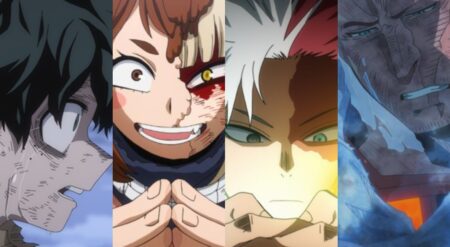
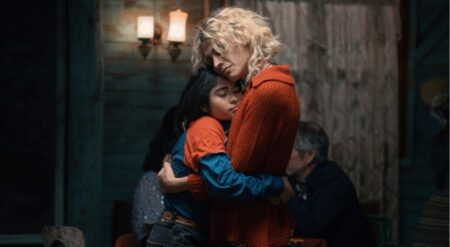
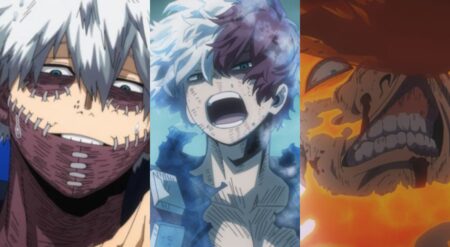
![[EXCLUSIVE] ‘Invincible VS’ Devs Dive Deep Into Their New Original Character: Ella Mental Ella Mental in Invincible VS](https://butwhytho.net/wp-content/uploads/2025/12/Invincible-VS-Ella-Mental-But-Why-Tho-1-450x247.jpg)